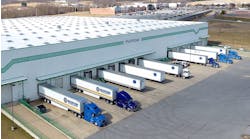Cash all around may stimulate economy, but at a price
This is the first in a series of four columns analyzing various fiscal policies currently being floated around Washington. I'll try to focus on the strengths and weaknesses of each in terms of how they might affect the economy, rather than on their political repercussions. And, for the most part, I won't bother to estimate the administrative or legal costs that will accompany each. No doubt, they'll all be expensive.
This month, I'd like to look at the idea of literally giving money back to the people — a tax refund, of sorts. One notion is to give a set amount to everyone, regardless of the amount of taxes they've paid in the past. It's not clear exactly how “everyone” will be defined, but for simplicity's sake, let's assume it's something like everyone age 18 and over counted in the last census.
Of course, whether people spend the money right away or put it into savings is directly related to income level. Those who have the lowest income levels will use the money for necessities; putting the money into a savings account won't be an option for them. Since one estimate has about two-thirds of the money being spent pretty quickly, this “tax refund” could result in a huge stimulus to the economy.
If the majority of the money is spent relatively quickly, we could face a significant rise in consumer prices, at least over the short term. Inflation would be most pronounced for non-durable necessities such as groceries, clothing, etc. Unless, of course, the additional demand is offset by an increase in production — but that's an unlikely scenario.
Let's assume that payments are made randomly throughout the course of the year. The people who receive their money toward the end of the year may find that prices have gone up or that the items they want are no longer available. This demonstrates why the payout mechanism itself (all at once, staggered, etc.) is also important.
Suppliers will take into consideration the fact that payments are temporary, and that the increase in demand will not be long term. And if there isn't a substantial increase in output, higher prices and inflation are a sure bet.
Demand will be greatest for the goods and services that people need most, which could prove beneficial for everyone — assuming the following scenario takes place. The increase in demand must be strong enough to justify production increases, which in turn justify the kind of investment in research and equipment that ultimately leads to low-cost alternatives.
A one-shot windfall probably won't do the trick. If increases in demand are not long term, subsidies would be necessary to achieve the profit levels essential for the kind of investments that lead to the production of low-cost alternatives. Hopefully, we learned a lesson from the 1970s, when producers relied on inflation to keep profits artificially high. We need to maintain the investment of strategies of the late 1990s that helped to introduce higher levels of productivity and cost containment.
Next month we'll tackle tax “refunds” that are based on the amount of taxes people have paid during the past five years, as well as the issue of moving money from general funds back into areas it was originally designated for, such as the highway trust fund. The following column will discuss payment of the national debt and changes to current tax regulations, including estate taxes and the marriage-penalty tax.
The series will wrap up with my recommendations for a suitable approach to fiscal policy. It will no doubt be some form of “all of the above.”


